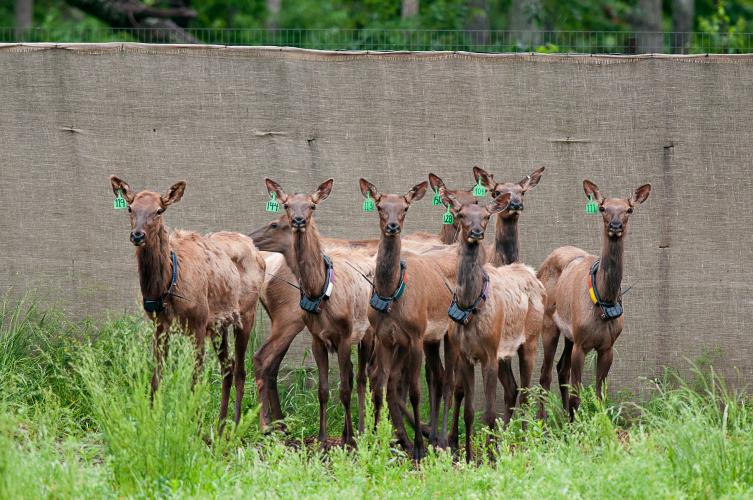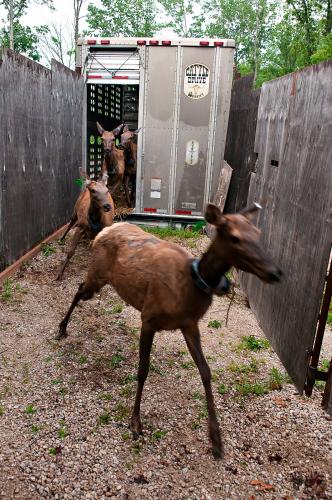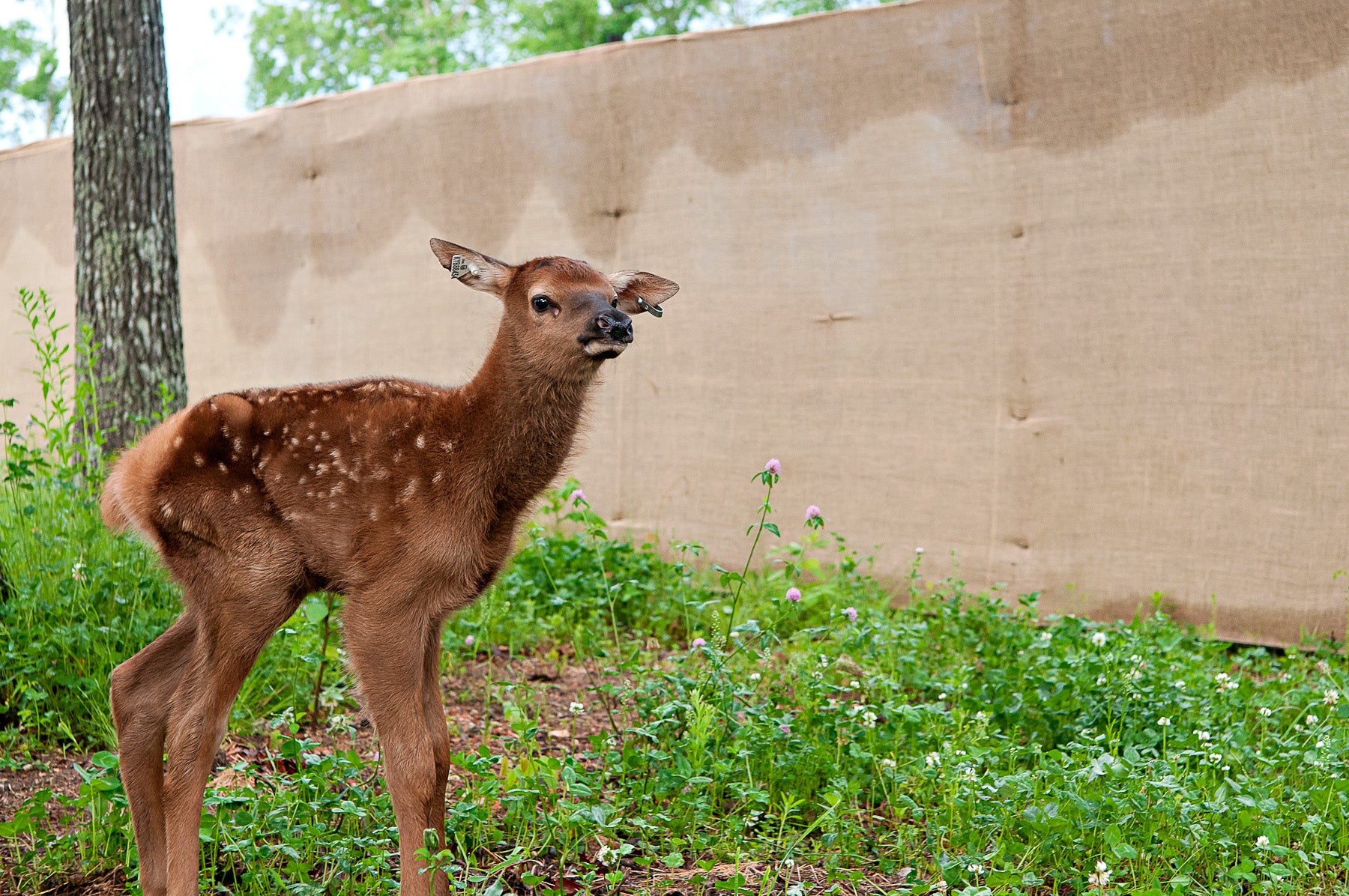
Xplor reconnects kids to nature and helps them find adventure in their own backyard. Free to residents of Missouri.


































Stay in Touch with MDC news, newsletters, events, and manage your subscription

Xplor reconnects kids to nature and helps them find adventure in their own backyard. Free to residents of Missouri.

A monthly publication about conservation in Missouri. Started in 1938, the printed magazine is free to residents of Missouri.










CARTER COUNTY, MO. – The Missouri Department of Conservation (MDC) added 20 adult cow elk, 16 yearling cow elk, three yearling bull elk and one newborn male calf to its elk restoration project in the Ozarks Tuesday morning.
Transported via livestock trailer from Kentucky, where they spent the past four months quarantined in a holding pen, the elk arrived at temporary holding pens on MDC’s Peck Ranch Conservation Area at first light. MDC staff quickly ushered the hoofed cargo into spacious holding pens, and within an hour Missouri’s newest four-legged residents were resting in the shade and grazing on lush clover.
Thirty-nine elk started the journey west, which ended with 40. MDC’s Jake Rieken, who made the trip west with the elk after spending the past four months caring for them in Kentucky, got a wonderful surprise when the convoy stopped so staff could check on the animals. He discovered that one of the pregnant cows had delivered a male calf. To avoid injury to the newborn, Rieken and other MDC staff removed it through a side door in the trailer. They placed it in a large animal crate in the bed of a pickup truck, secured the blanket-covered crate, and continued the trip. The newborn calf, nicknamed “Plus-1,” was reunited with its mother in a holding pen at Peck Ranch.
“He is doing very well,” said MDC State Wildlife Veterinarian Kelly Straka. “He looks good and his heartbeat sounded fantastic.”
Dr. Straka added that all of the elk underwent extensive health and disease testing in Kentucky before being brought to Missouri.
The elk will remain in the holding pens at Peck Ranch for up to several weeks as they acclimate to the area and MDC staff continue to monitor them. Some cows will begin dropping calves while in the holding pens.
“We’ve divided the pregnant cows into small groups in various pens to give them privacy and reduce their stress,” said Dr. Straka. “Those that do not calve before being released from the holding pens will seek out secluded spots to give birth. Most calves should be born by mid-June. This year’s group of 40 elk will add to the approximately 70 already living in the restoration zone. We expect several dozen new calves this spring from established elk, plus more calves from this year’s group.”
The Missouri restoration of this once-native species began with MDC bringing elk from Kentucky in May 2011 and again in May 2012 to the Department’s elk restoration zone covering 221,000 acres in parts of Shannon, Carter, and Reynolds counties.
This year, MDC again worked with Kentucky and Virginia state wildlife agencies to trap elk in January from the Appalachian Mountains of southeastern Kentucky. The effort resulted in 51 elk being trapped with Missouri getting 39, plus the newborn calf. Virginia will receive the remaining elk for its restoration effort.
As done in the previous two years of trapping, Missouri-bound elk received radio collars right before their trip west as part of a research project between MDC and the University of Missouri. The collars help track movement patterns and preferred habitat. The research project is funded by Federal Aid from the Wildlife Restoration Program administered through the U.S. Fish and Wildlife Service.
The Rocky Mountain Elk Foundation helped fund the 2013 capture and care of the elk in Kentucky. RMEF also donated materials and volunteer help at both Kentucky and Missouri holding facilities.
“This restoration effort is another conservation legacy, for us and for future generations, that could not have been possible without the enormous help and support from our staff and many conservation partners including The Nature Conservancy, National Park Service, LADD Foundation and Forest Service,” said MDC Deputy Director Tom Draper.
“On behalf of MDC leadership,” Draper continued, “we continue to be impressed with the passion, talent and dedication of MDC staff, and thankful for their ongoing hard work on this project. We are also grateful to the states of Kentucky and Virginia for their partnerships in elk restoration. We also thank the Rocky Mountain Elk Foundation, Safari Club International, Big Game Hunters Foundation and Bass Pro Shops for their generous funding and support of this project. We are grateful to the many local landowners who have shown their support by creating elk habitat on their nearby properties, and to the communities of Eminence, Winona, Ellington and Van Buren, which have embraced the effort. We are also appreciative of The University of Missouri and the University of Kentucky for providing research support for the project.”
As in the past two years of elk restoration efforts, the 12,000-acre Refuge Area at Peck Ranch, where elk tend to congregate, is closed into July as new elk acclimate and cows give birth. MDC will open the area to elk driving tours later this summer.
For more information on elk restoration in Missouri, visit mdc.mo.gov.